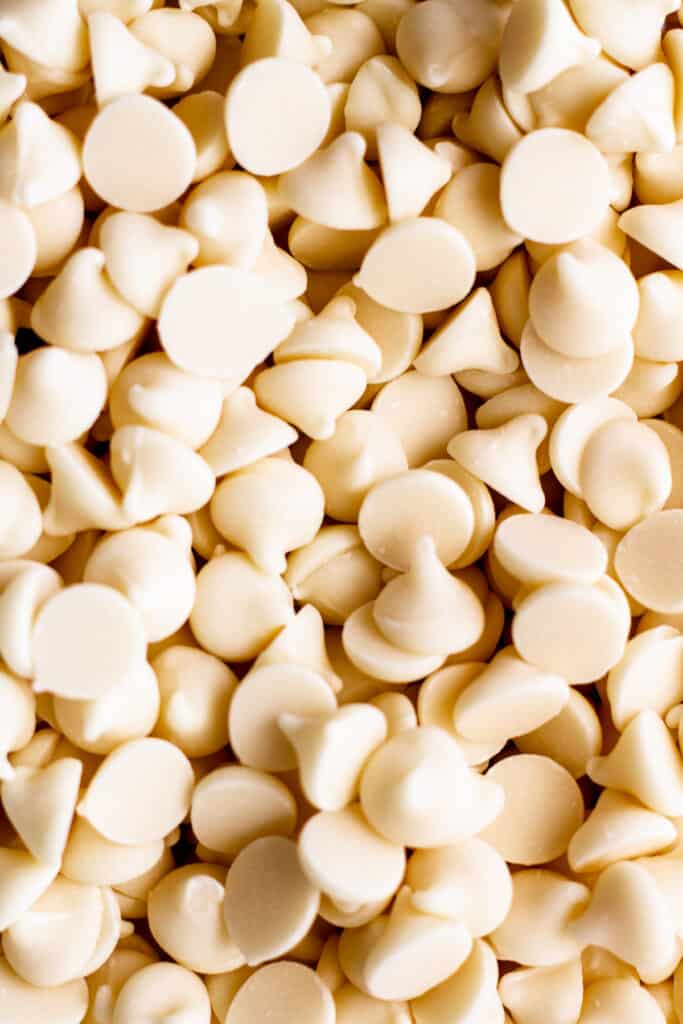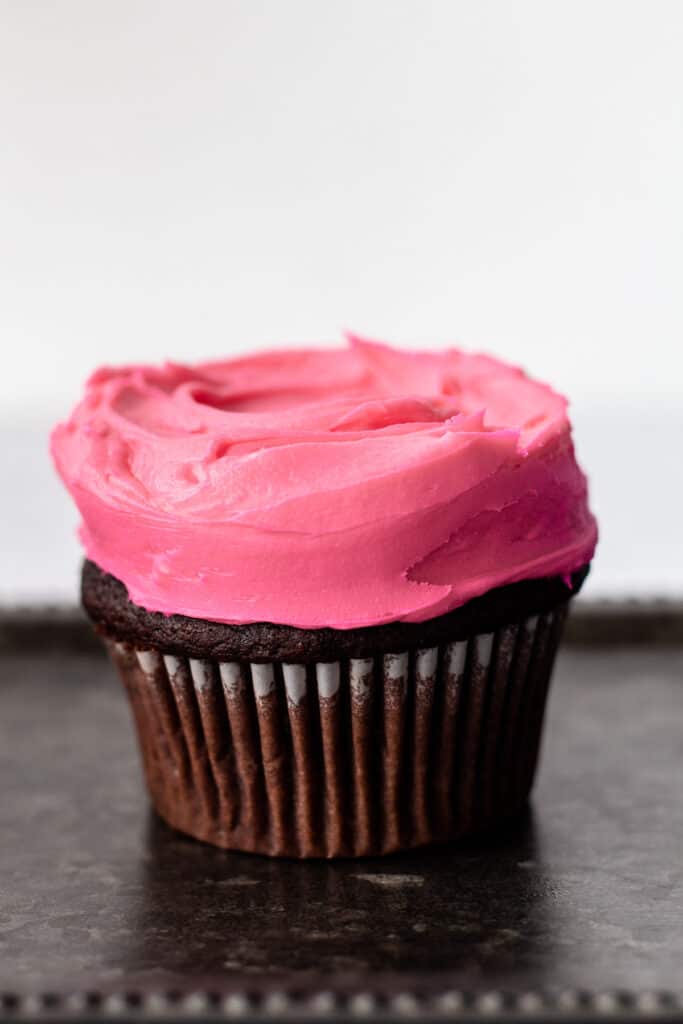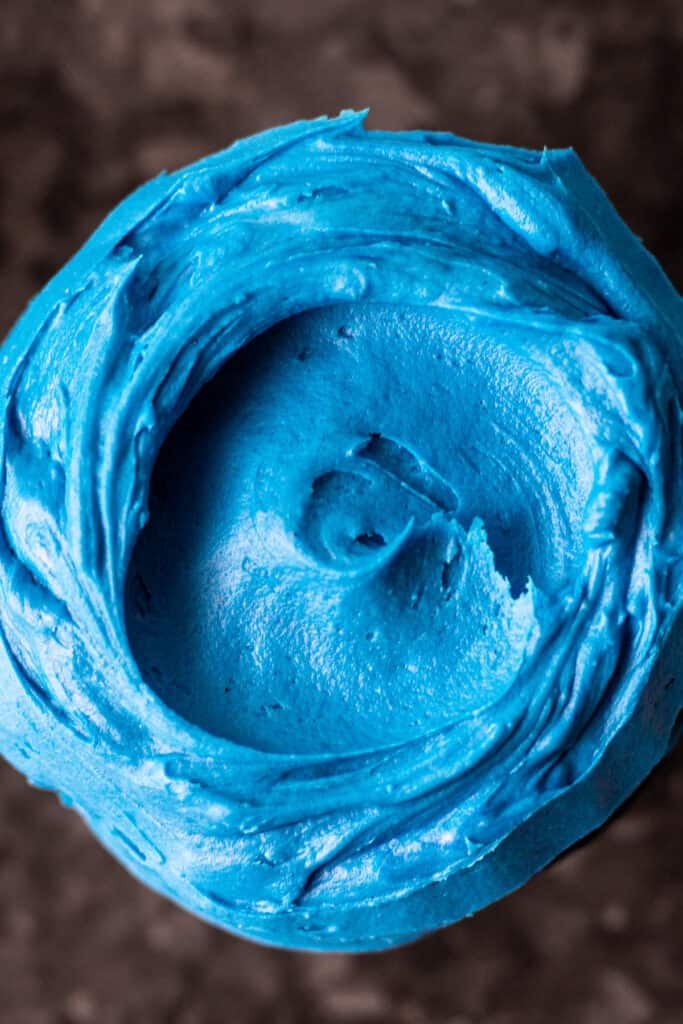Welcome to the last installment of my ultimate guide to ganache series - all about white chocolate ganache. I looooove using white chocolate ganache. It is my favorite alternative for those who don't like fondant. It's creamy, delicious and serves as the perfect, smooth, blank canvas on a cake.

White chocolate is getting its own separate post because it can behave a bit differently from semi/dark chocolate ganache. It can seize or split easier, and melting white chocolate can sometimes be a challenge. Timing and ratio are key to white chocolate ganache. Gone are the days of troublesome ganache. With these tips and tricks, making a smooth and creamy white chocolate ganache will be a breeze.
How is white chocolate different from other chocolate?
White chocolate, compared to dark and milk chocolates, do not have any cocoa solids. It also has more sugar, more milk solids, less cocoa butter and can burn or seize easier than dark chocolate. But don't let that dissuade you from making it. Choosing the right chocolate, heating it slowly and mixing it properly are key to a smooth and creamy ganache.
Really, the most important factor of determining the right white chocolate for ganache is the quality of the chocolate. As with dark chocolate, the quality of white chocolate makes a huge difference in the final ganache. Quality determines the taste and texture, especially in white chocolate which can range from chalky and cloyingly sweet to smooth and milky, which is why chips or coating chocolate can be a bit of a gamble. But, you can make ganache with them.

How to make white chocolate ganache
White chocolate ganache ratio: 3:1 or 12oz white chocolate to 4oz cream
Weigh or measure the chocolate and place in a bowl. Chop the pieces finely if you are using chocolate bars. Microwave for 45-60 seconds to soften the chocolate.
Place the cream in a saucepan and place on the stove over medium low heat.
Heat the cream until it starts to steam along the top. Keep a close eye on the cream making sure the cream doesn’t scald or curdle.
Once heated, pour the cream over the warmed chocolate. Let the mixture sit for 5 minutes.
With a spatula or a whisk, begin gently stirring the mixture starting in the center to blend, and working outward. This creates a smooth emulsion and prevents air from being incorporated. Too much air can cause the mixture to split.
You can use the ganache immediately or set it aside to cool to the desired consistency. Be sure not to agitate the chocolate while it is setting, which can cause it to split.
Let it set at room temperature. Place plastic wrap onto the surface of the ganache so that it doesn't form a film.
The ganache is ready for drips at 85-90F and ready for filling or icing a cake when the texture is thickened and smooth, resembling peanut butter or canned frosting.

Bottom: Whitened ganache
Whitening Ganache
Surprise! White chocolate ganache is often enough not white. Color does depend on the brand and varies, but with real white chocolate, to get a true white, you will have to color it. Candy melts and almond bark tend to be more white and less translucent.
You can whiten your ganache by adding white gel color in the cream before mixing it into the chocolate or mixing in the color after incorporating the cream. Alternatively, you can color it once it is ready to use.
Whipped ganache is a fantastic cupcake frosting. Beating the cooled ganache in a stand mixer until fluffy and thickened is also a way to whitening ganache and making a lighter frosting.

How to color white chocolate ganache
Traditionally, adding water based anything to chocolate spells disaster. Since ganache is an emulsion, you can add a concentrated gel color to the ganache. I like to whiten the ganache first. This is to make sure the color I am adding to the ganache isn't altered by the ganache's yellowish/translucent hue.
Even though you can totally use gel color in ganache, if I'm making red, navy, or even black (when possible use dark chocolate ganache for black - MUCH easier), I like to use oil/chocolate colors because these colors require a lot more color added to the ganache. The oil/chocolate colors can darken the ganache faster with less color.

Uses for white chocolate ganache
- Drip cakes
- Glazes for donuts, eclairs, cupcakes and more
- Ice cream topping
- Cake or cupcake filling
- Topping brownies
- Dipping cookies
- Macaron filling
- Whipped chocolate ganache frosting
- Truffles
- Frosting cakes
- Dipping fruit

White Chocolate Ganache and Cake Decorating
Ganache is ideal for frosting cakes. It’s airless and super smooth, creating an smooth and flawless cake covering. It’s also one of the best cake frostings to use if you’re making a fondant cake. Ganache holds its shape better, and sets up more quickly than buttercream, allowing you to keep smooth and crisp ganache edges when covering with fondant.
Ganache also has a higher melting point than buttercream, which means that on warmer days, buttercream would melt faster than ganache. For those people who don't like fondant, white chocolate ganache can give you that same white, flawless finish that fondant does.
Another perk of using ganache on layer cakes, is that you typically don’t get any bulging or blowouts as long as you’re allowing your cake to settle after filling and layering it and you’re not trapping any air under your fondant. You also want the ganache to be fully set before covering fondant.

Flavor variations
I love infusing flavors into white chocolate ganache, especially fruit reductions. But here are some ideas on what you can infuse or add to your ganache.
Jams and fruit reductions
Teas
Zests
Mint/Herbs
Extracts
Salted Caramel/Nut Butters
Alcohol
Coffee
Sprinkles

For more information on ganache and troubleshooting, check out my Ultimate Guide to Ganache posts listed below. If you make white chocolate ganache, let me know! Drop a comment or tag me on Instagram. I love seeing your creations.
Enjoy!
Ash xx
For more on ganache, check out these posts:
The Ultimate Guide to Chocolate Ganache Part 1
The Ultimate Guide to Chocolate Ganache Part 2
Chocolate Stout Layer Cake with Coffee Irish Cream Buttercream

Priya
Hi,
My white ganache is hard but still not able to make peaks to decorate cake. What should I do ?
Ashley
Hi Priya! Are you trying to whip the ganache?
Rachel
For decorating cupcakes should I whip the ganache or leave it in the fridge to chill and thicken.
Ashley
Hi Rachel! It all depends on the texture you want to achieve. Whipped is more light and fluffy, while the peanut butter/frosting texture is more dense and smooth. Both are great with cupcakes.
LC Wood
The instructions are a bit confusing. How can you make whipped ganache for frosting if the whipping process causes the ganache to split?
Ashley
Hi! It's really all about temperature. For freshly made ganache, if the cream is too hot, it can split while whisking the cream into the chocolate. If the ganache is stirred too often while it cools to room temperature, it can split. When it comes to whipping the ganache, the ganache needs to be cold. Don't whip above medium speed and not any longer than just stiff peaks. Essentially, the mixture has to be the same temperature throughout the varying steps in order to not split. I hope this helps!
Linda
Does the whipped ganache hold its shape as well as the unwhipped ganache? Can it be used similarly under fondant to minimize risk of bulging?
Ashley
Yes, it does hold it's shape. You could use it under fondant, but beware that since whipped ganache is essentially just beating air into the chocolate, there is a risk for air bubbles/bulges/blow outs. For the smoothest base under fondant, I'd use regular, peanut butter consistency ganache.